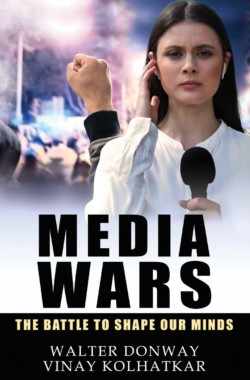A Brand New “Right” to “Gay Marriage.” Who Knew?
What do you make of a “right” discovered less than two decades ago—before which time literally no one realized that it was a “right” and being violated? The struggle for human rights runs through the centuries like a cry for justice—for recognition that the individual’s life, freedom of choice and action, and property constitute moral claims on other individuals and governments. Much of humanity, at different periods, has argued—and clamored—for social and legal recognition of rights long known and acknowledged, but denied legal protection.
Before the U.S. Supreme Court is a case seeking recognition of a “right” virtually never mentioned, never asserted, and never missed until just 20 years ago.
But now, before the U.S. Supreme Court is a case seeking recognition of a “right” virtually never mentioned, never asserted, and never missed until just 20 years ago—a “right” now asserted as urgent, evident, and inevitable. It is the “right” for two people of the same sex to marry and their marriage be made official by the state with the explicit assertion it is no different than the marriage of a man and woman.
At issue specifically is whether or not the Constitution requires states to issue marriage licenses to same-sex couples, and, if not, whether or not those states are required to recognize same-sex “marriages” performed in states where they are legal. The Obama Administration, of course, has weighed in on the side of same-sex “marriage.”
The appearance of this right by spontaneous generation is not lost on the justices. Chief Justice John Roberts said : “One of the things that’s truly extraordinary about this whole issue is how quickly [there] has been the acceptance of your position across broad elements of society…”
Justice Stephen Breyer said “The opposite view has been the law everywhere for thousands of years among people who were not discriminating even against gay people, and suddenly you want nine people outside the ballot box to require states that do not want to do it to change what marriage is to include gay people.”
The battle of assertive, brave homosexual individuals for many decades has been to be left alone by government to make their sexual choices, choose their relationships, and be protected by government in living their lives as they see fit. In this, they adhered strictly to the classic view of human rights as the sanction of freedom of choice, action, and association. That righteous battle cannot be said to be won, but it is fair to say that in America governments now recognizes the privacy of sexual orientation—and the public for the most part demands that homosexuals be left free in “the pursuit of happiness.”
That state of affairs, which subsists in the United States, especially in urban areas, and nationwide in terms of law enforcement, is by no means universal. Wide swathes of the world, including most Islamic nations, for example, treat homosexual activity as a crime—often a capital offense. In other words, the battle by homosexuals for classic rights to be left alone with their choices is far from won. It is worth asking how that battle would be changed if the recognition of the right to have homosexual relationships is linked with the “right” of homosexuals to an officially recognized marriage.
Justice Anthony M. Kennedy pivotal in this case. He has written each of the Court’s major “victories” advancing the “movement.” He pressed the lawyer now before the Court arguing the case for same sex marriage, Mary L. Bonauto, to explain why the court should change the definition of marriage as between a man and a woman when the concept of same-sex marriage is so new. He said: “This definition has been with us for millennia, and it’s very difficult for the court to say, “’Oh, well, we know better.’”
This strikes me as “stage setting,” as framing the argument to make a good narrative for the record—not as an inquiry arising from genuine astonishment, that nine justices of the U.S. Supreme Court are asked to create, by their ruling, a new reality in contradiction to the most biologically, socially, and legally rooted reality of our species.
Chief Justice Roberts gave voice to this. “You’re not seeking to join the institution [of marriage]—you’re seeking to change what the institution is. The fundamental core of the institution is the opposite-sex relationship, and you want to introduce into it a same-sex relationship.”
The justices are saying the right words, and their words are irrefutable: marriage, unless you consider definitions arbitrary and words to have infinitely elastic meanings, is between a man and a woman. Not between a man and a man, a man and his dog, or a man and his shoe. The concept derives from the facts of procreation, child rearing, and, less recognized but vital to a couple’s happiness, from the distinct and complementary sexual psychologies of man and woman.
Ms. Bonauto was not at a loss. She said, “If a legal commitment, responsibility and protection that is marriage is off limits to gay people as a class, the stain of unworthiness that follows on individuals and families contravenes the basic constitutional commitment to equal dignity.”
Did it ever occur to you, even once, before the gay-propaganda crusade began, that a man who could not marry another man suffered “the stain of unworthiness”? Did it ever occur to you, even once, that a woman who could not marry another woman had less “dignity”?
No, it never occurred to any of us. Nor did it occur to anyone over literally thousands of years during which the battle for genuine human rights occupied the best and brightest minds, humanity’s idealists.
Indeed, the argument that forwards gay “marriage” must accept all forms of polygamy and asexual “relationships” as “marriages”—since any number of loving, consenting adults living together is in fact a “marriage” then.
What was the quality of the counterarguments? Well, Justice Ruth Bader Ginsberg helped out Ms. Bonauto by suggesting that definitions of marriage already have changed because “Marriage was a relationship of a dominant male to a subordinate female.”
I sympathize with Justice Ginsberg for her subordination in her marriage for 56 years to Martin D. Ginsberg; at least she managed, in her subordinate position, to get as far as the Supreme Court. But the supposed social relationship between a husband and wife is an issue far less fundamental and defining than that the marriage is between a man and a woman. The epistemology of definitions, which would be useful to justices of the U.S. Supreme Court, demonstrates that an objective definition is in terms of essentials, characteristics fundamental to and explaining most other characteristics of the entities in the group being defined. The attribute of being between a man and woman explains far more of the other characteristics of marriage than the changing status of men and women depending upon historical period, social class, personality, and such.
Justice Samuel A. Alito pushed the issue of definition: “If marriage is simply a commitment between loving consenting adults, how could a state withhold that from siblings, or two women and two men who decided to marry?” Indeed, the argument that forwards gay “marriage” must accept all forms of polygamy and asexual “relationships” as “marriages”—since any number of loving, consenting adults living together is in fact a “marriage” then.
On display here, for all to see, is the role of objective definitions in protecting the role of reason in human affairs.
On display here, for all to see, is the role of objective definitions in protecting the role of reason in human affairs. By an “objective definition” I mean one rooted in the reality of a class of entities that share (and are distinguished from) all other entities by specific characteristics, so that we use words as pointers to a reality we can observe in common. It gives us the advantage of knowing what we are, and are not, talking about.
In a single statement, the supposed defender of marriage before the Court tossed aside the entire matter of definitions and agreed with Ms. Bonauto that “marriage” is whatever we choose to say it is. He merely disagreed about who should say it. John Bursch, the attorney representing the states arguing to retain the right to decide about “gay marriage,” said: “This case isn’t about how to define marriage. It’s about who gets to decide that question. Is it the people acting through the democratic process or is it the federal courts? And we’re asking you to affirm every individual’s fundamental liberty interest in deciding the meaning of marriage.” [Emphasis added.]
Is the science of epistemology, including the principles for creating definitions, developed and refined since the time of Aristotle, important in our lives? Listen to Mr. Bursch: “affirm every individual’s fundamental liberty interest in deciding the meaning of marriage…”
Or how about every individual’s “fundamental liberty interest” in deciding the meaning of “murder,” or “freedom of speech,” or “property,” or “innocence or guilt,” or “racism,” or “custody”? Mr. Bursch’s equivocation is transparent and embarrassing. Yes, every individual is at liberty in a political sense to decide the meaning of any term; but some such decisions, such as the famous assertion that “all property is theft,” will be incoherent, and some, such as that “justice” is the will of the majority, are mere confusion—or worse.
No one knows what the justices will decide. They are aware that some two-third of Americans, in polls, approve of gay marriage. As far as polls can be believed, I would suggest to you that this is an expression of goodwill by Americans, who, overwhelmingly, have had no experience of homosexual “marriages” as a fact of their community life. I am not suggesting, here, what their reaction might be; I do not know. But the justices wondered.
Chief Justice Robert said: “People feel very differently about something if they have a chance to vote on it than if it’s imposed on them by the courts.”
Where is the voice on the bench, or arguing before it, asking: What are the facts of reality that give rise to the concept of marriage?”
Having asked that, if the court had done so, it need ask only one additional question: Has human reality in our time (for only human reality, the result of choices, changes fundamentally) changed to an extent that requires us to redefine “marriage”? And, in the name of the Constitution of the United States of America, to impose that definition by the power of the state upon all Americans?
And the answer is: The only reality that has changed is the existence for less than two decades of a politically influential lobby, determined to win legal sanction for a still only-partially understood human condition, which henceforward not science but the decision of the Court would declare “normal,” ending the debate by means of a legal coup de etat.
« I Run a Private School – and I’m Against School Vouchers Emptiness and Nausea in Modern Art »










